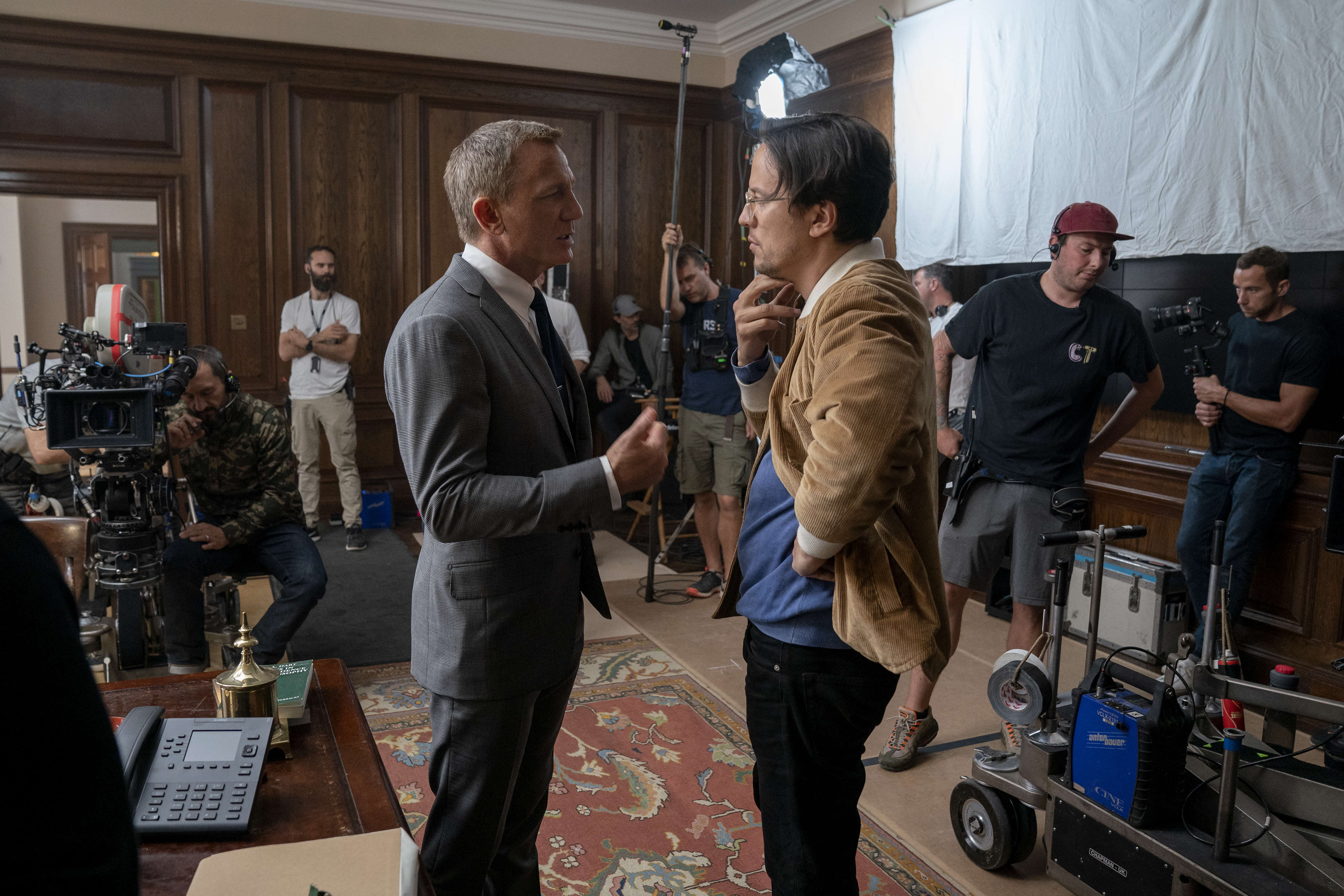Create a free profile to get unlimited access to exclusive videos, sweepstakes, and more!
Cary Joji Fukunaga explains what it took to earn that unprecedented 'No Time to Die' ending
The director of Daniel Craig's final Bond film had to pull off a tricky closing chapter.

Every new Bond film feels like a big event, but even by those standards No Time to Die felt like an especially huge release. We knew going in that it was the final film in Daniel Craig's decade-plus tenure as Agent 007, which is a luxury we haven't always had with past Bonds, and everything about the scale of the movie made it seem particularly special. Then, after more than a year of pandemic delays, we finally saw what No Time to Die had in store, and it lived up to that sense of scale with an unprecedented closing chapter.
Of course, it was up to director Cary Joji Fukunaga to pull that closing chapter off, and that meant making the ideas Bond's producers had feel "earned" within the larger story.
**Spoiler Warning: There are spoilers for No Time to Die ahead!**
According to Fukunaga, from the moment he stepped in to work on the film that would become No Time to Die, producers had the idea that they wanted Craig's closing chapter to be the final world on his version of Bond in a very definitive way, by killing off the character in the final act.
“In my first meeting with Daniel and the producers, they said that’s how they wanted the story,” Fukunaga told Empire. “They felt that was an ending. I was like, ‘Well, it’s a result of an ending, but we don’t know what happens. It has to be earned.’”
To earn No Time to Die's stated goal of killing off Craig's version of Bond, Fukunaga and company latched onto the idea of revealing that Bond had a daughter with his lover from Spectre, Madeleine Swann (Lea Seydoux), and due to their estrangement before No Time to Die began, he'd only just met her. In protecting and rescuing Madeleine and his daughter Mathilde, Bond put himself in close contact with Safin (Rami Malek) just long enough for the villain to infect him with the nanobots from Project Heracles coded specifically to his lover and their daughter's DNA. Because of the infection chain established by the nanobots, Bond could no longer be in close contact with either Madeleine or Mathilde for fear of killing them. To make things more complicated, he also couldn't leave Safin's World War II-era island base without opening its blast doors to allow Royal Navy missiles to penetrate and destroy the entire weapons supply within.
“I was really struggling, because it couldn’t be conventional action,” Fukunaga said. “It couldn’t just be a demonic device, it had to be tied into the central theme of the story.”
Those somewhat convoluted circumstances eventually created a Catch-22 where Bond was doomed to a live isolated from his family if he left the base, but doomed to die a fiery death if he stayed behind. To make the emotional impact land, Fukunaga engineered the ending so Bond would have one last chance to talk to Madeleine before the missiles hit. He also made sure that, no matter how badly audiences didn't want to believe it, his visuals made it clear that Craig's Bond was dead.
“I wasn’t trying to be obtuse with it,” he said. “I wanted to be clear with it. But I wanted it to be tasteful. We didn’t want that shot in Terminator 2 where you see Sarah Connor turning into bones. But we wanted to show that he wasn’t going to jump down a sewer at the last second. So that wider shot of the island being pummeled was a mixture of macro and micro. The full effect is, ‘Yes, he’s gone, but he succeeded in making sure none of [the] weapons would go on into the future.’”
So, thanks to a carefully engineered closing act, Craig's Bond was able to die in a satisfying way, and producers were still able to put a "James Bond Will Return" tag at the very end of the film, signaling that a new era with a new Bond will begin soon. The result is a Bond film that's truly like no other, a curtain call for an actor that felt earned after so much time in the role.
It felt like closure, like closing off the past, and closing off the story,” Fukunaga said. “It’s that last sentence in a paragraph in the last chapter of a book, just to try to make it feel satisfying.”
No Time To Die arrives on Blu-ray and 4K Ultra HD tomorrow.


























